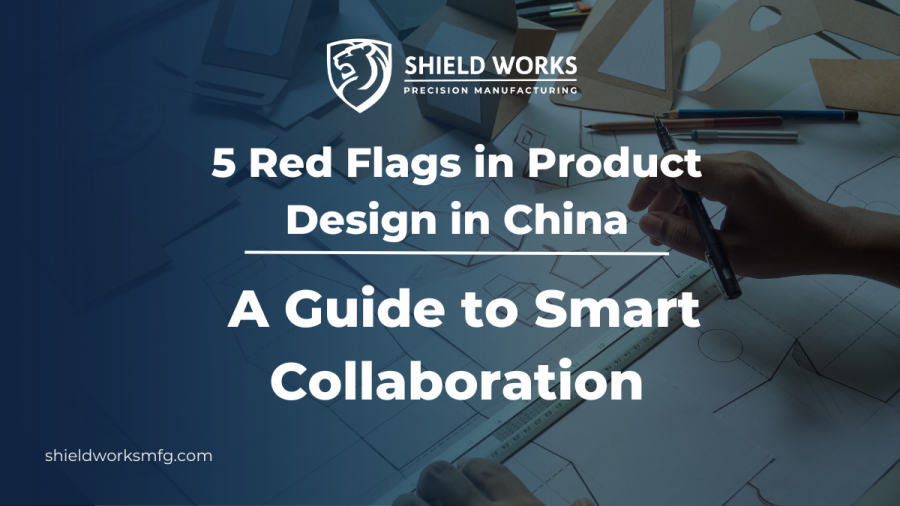5 Red Flags in Product Design in China: A Guide to Smart Collaboration

In the world of manufacturing and design, China holds a pivotal position, especially when it comes to product design and industrial design. Collaborating with Chinese companies offers a plethora of advantages, from cost savings to access to a vast manufacturing ecosystem. However, like any business venture, especially in a foreign landscape, it’s vital to proceed with caution and be aware of potential pitfalls. Understanding the red flags in product design in China is essential for establishing a smart, effective, and mutually beneficial collaboration. Here, we’ll explore five critical red flags to watch out for, ensuring your venture into the Chinese product design sector is both successful and rewarding.
Lack of Clear Communication and Language Barriers
A major hurdle that often derails otherwise promising collaborations in the realm of product and industrial design with Chinese partners is the obstacle of communication challenges, including significant language barriers.
The intricacies of product design demand precise, nuanced communication to ensure that every detail of a project’s requirements, expectations, and limitations is thoroughly understood by all parties involved. When there’s a disconnect in this critical area, the project can suffer from misinterpretations, leading to design errors or delays.
Relying solely on translators is not always a failproof solution, as the subtleties of technical language and industry-specific jargon can be lost in translation. Opting for a design partner with a strong command of your language, or who employs skilled bilingual professionals proficient in the technical language of design, can greatly diminish these risks.
Inadequate Understanding of Intellectual Property Rights
When venturing into the Chinese product design market, a critical aspect to be wary of is the potential for gaps in understanding or respect for intellectual property (IP) rights. The significance of safeguarding your designs cannot be overstated, as failing to do so could lead to dire consequences, including the loss of your competitive edge or legal battles that can be both time-consuming and expensive.
It’s imperative to engage with firms that recognize the importance of IP protection and are proactive in taking steps to secure your creations. This means ensuring that any potential partner is willing to engage in comprehensive discussions about IP and agree to legal safeguards such as non-disclosure agreements (NDAs) that protect your interests.
Additionally, it’s beneficial to have a strong grasp of China’s specific IP laws, which can differ markedly from those in other countries. Understanding these laws enables you to navigate the legal landscape more effectively and to set up additional protective measures if necessary.
Insufficient Portfolio or Lack of Relevant Experience
The vast world of industrial and product design encompasses a range of specializations, and it’s not uncommon for a firm to excel in one area while lacking expertise in another. This differentiation is particularly significant if your project requires specialized knowledge, such as in wearable technology or sustainable packaging solutions. Evaluating a firm’s previous work critically and probing into their experience with projects analogous to yours is key.
This exploration should extend beyond surface-level portfolio presentations to include discussions on methodologies, design challenges faced, and how they were overcome. Asking for references or detailed case studies can also shed light on the firm’s capabilities and the results they’ve achieved for past clients. These steps are essential in assessing whether the firm has the requisite skills and understanding to turn your vision into a tangible product. It’s equally important to gauge the firm’s adaptability and willingness to research and tackle domains they are less familiar with, provided they show a strong foundational skill set.
Overpromising and Under-Delivering
When evaluating potential design partners in China, one should approach overly optimistic projections with a healthy dose of skepticism. Firms that guarantee unusually fast turnarounds, exceptionally low costs, or extraordinarily ambitious outcomes without a solid, detailed plan may be overlooking the complexities inherent in product and industrial design projects.
True professionalism is reflected not in making lofty promises but in setting realistic expectations grounded in experience and an in-depth understanding of the project scope. It’s crucial to distinguish between genuine confidence backed by evidence, such as previous successful projects similar to yours, and mere boastfulness without substance.
A credible design firm will engage in transparent conversations about the challenges your project may encounter and how they plan to address them, rather than bypassing these discussions with assurances that sound too good to be true.
Pricing That Is Too Good to Be True
Extremely low pricing often signals potential compromises in critical areas such as material quality, detail to craftsmanship, or adherence to timelines. These compromises can not only affect the final product’s integrity but also lead to increased costs in the long run due to necessary redesigns or quality control issues.
It’s advisable to conduct a comprehensive comparison of quotes from various design firms, paying close attention to what is included in each quote. A detailed breakdown can reveal discrepancies in scope, materials, or services that justify cost differences. This step helps in understanding whether a low quote is truly a bargain or a red flag indicating possible hidden costs or substandard service.
Engaging in open discussions with potential partners about how they can offer lower prices can provide insights into their processes, efficiency, and resource management. Some firms may have legitimate reasons for lower costs, such as economies of scale, in-house fabrication capabilities, or special supplier relationships. However, the emphasis should always be on ensuring that cost savings do not come at the expense of the project’s quality and your overall objectives.
If you are embarking on a product design journey in China and are seeking a reliable and experienced partner, look no further than Shield Works. As a product development and contract assembly company based in China, we prioritize effective communication, respect for intellectual property, a strong portfolio, and transparent practices. Reach out today to explore how we can collaborate to bring your innovative product concepts to fruition successfully.
